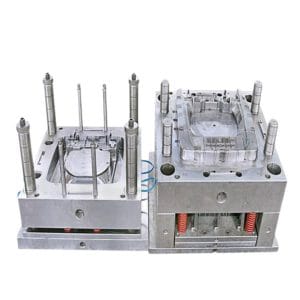When designing a part for injection molding or machining What should be avoided?

When it comes to injection molding or machining, the design process is critical to the success of the final product. There are a number of factors that need to be taken into account in order to avoid any issues during production. In this blog post, we will explore some of the things that should be avoided when designing a part for injection molding or machining. From sharp corners and undercuts to material selection and more, read on to learn more about how to avoid common mistakes in the design process.
What is Injection Molding?
Injection molding is a process in which molten material is injected into a mold under high pressure. The material is then cooled and ejected from the mold. Injection molding is used to create parts with complex shapes that would be difficult or impossible to produce using other manufacturing methods.
Parts that are designed for injection molding must be created with certain features in mind. These features will determine how the part can be manufactured and whether it will be able to withstand the high pressures of the injection molding process.
Some things that should be avoided when designing a part for injection molding include:
– intricate designs with many small details
– sharp corners or edges
– excessively thin walls
What is Machining?
Machining is a process where the material is removed from a workpiece using cutting tools. Machining can be used to create holes, slots, or contours on a workpiece. It can also be used to create threads or other types of fasteners on a workpiece.
Design Considerations for Injection Molding
Injection molding is a process that can be used to create objects from various materials. The process involves injecting molten material into a mold and allowing it to cool and solidify. In order to ensure that the final product is of good quality, there are a number of design considerations that need to be taken into account.
One of the most important considerations is the type of material that will be used for the injection molded part. Different materials have different properties and react differently to the injection molding process. As such, it is important to select a material that is suited for the intended application and has the right properties for the desired outcome.
Another important consideration is the size and shape of the injection molded part. The mold needs to be designed in such a way that it can accommodate the desired shape and size of the part. It is also important to consider the wall thickness of the part, as this will affect how strong and durable it is.
Finally, it is also necessary to take into account any special features or requirements that the injection molded part might need. For example, if the part needs to be transparent, then a different material might need to be used. Alternatively, if the part needs to be flexible, then a different manufacturing process might need to be used.
Design Considerations for Machining
Designing a part for machining presents a unique set of challenges and considerations that must be taken into account in order to produce a successful final product. Some of the key design considerations for machining include:
1. Material Selection: The choice of material is critical when designing parts for machining, as different materials will require different types of cutting tools and have different machinability characteristics. In general, harder materials are more difficult to machine but can result in a stronger final product.
2. Part Geometry: The geometry of the part also plays a significant role in the success of the machining process. Parts with complex geometries or tight tolerances can be more difficult to machine accurately, so it is important to carefully consider the feasibility of such designs before committing to them.
3. Tooling Considerations: The type and number of cutting tools required for machining a part must be carefully considered ahead of time in order to ensure that the manufacturing process is efficient and cost-effective.
4. Machining Tolerances: Tolerances are critical when designing parts for machining, as even small deviations from the desired dimensions can cause problems during production. It is important to work with experienced engineers and manufacturers to establish realistic tolerances for your parts before beginning production.
Conclusion
Injection molding and machining are two very important processes in the manufacturing world. When designing a part for either of these processes, there are certain things that should be avoided in order to prevent issues during production. Some of the things that should be avoided include sharp corners, undercuts, and excessive wall thickness. By avoiding these design flaws, you can help ensure that your parts will be produced successfully and without any issues.

